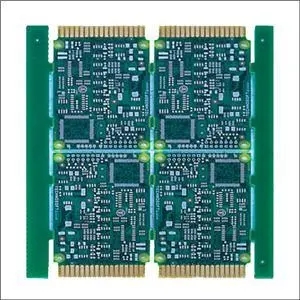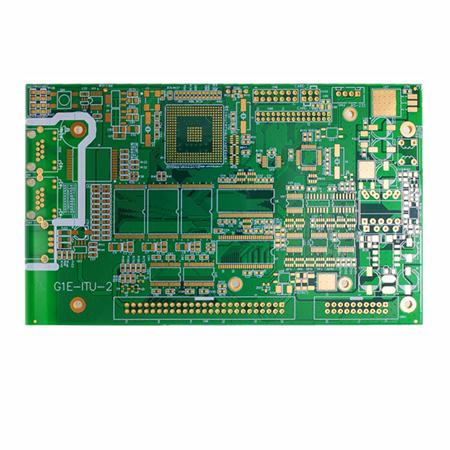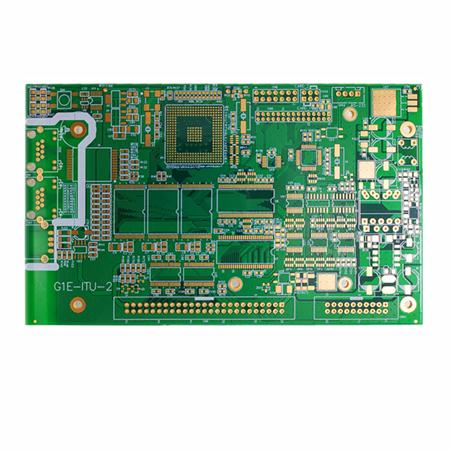
Characteristics, Application and Development Trend of PCB Surface Treatment Process
With the continuous improvement of human requirements for living environment, the environmental problems involved in PCB production are particularly prominent. At present, the topic of lead and bromine is the most popular; Lead free and halogen-free will affect the development of PCB in many aspects. Although at present, the change in PCB surface treatment process is not very big, which seems to be a distant thing, it should be noted that long-term slow changes will lead to huge changes. With the growing call for environmental protection, the surface treatment process of PCB will certainly change dramatically in the future.
The purpose of surface treatment The basic purpose of surface treatment is to ensure good solderability or electrical properties. As the copper in nature tends to exist in the form of oxide in the air, it is unlikely to remain as the original copper for a long time, so other treatments are required for copper. Although most copper oxides can be removed by strong flux in subsequent assembly, the strong flux itself is not easy to remove, so the industry generally does not use strong flux.
There are many PCB surface treatment processes, including hot air leveling, organic coating, chemical nickel plating/gold dipping, silver dipping and tin dipping, which are introduced one by one below.
1. Hot air leveling; Hot air leveling, also known as hot air solder leveling, is a process of coating molten tin lead solder on the PCB surface and leveling (blowing) it with heated compressed air to form a coating that is both resistant to copper oxidation and can provide good solderability. Copper tin intermetallic compound is formed at the joint of solder and copper during hot air leveling. The thickness of solder for protecting copper surface is about 1-2mil. PCB shall be immersed in molten solder during hot air leveling; The air knife blows the liquid solder before the solder solidifies; The air knife can minimize the meniscus of solder on the copper surface and prevent solder bridging. Hot air leveling can be divided into vertical type and horizontal type. The horizontal type is generally considered to be better, mainly because the horizontal hot air leveling coating is relatively uniform, which can realize automatic production. The general process of hot air leveling is: micro etching → preheating → coating flux → tin spraying → cleaning.
2. Organic coating; The organic coating process is different from other surface treatment processes. It acts as a barrier layer between copper and air; Organic coating process is simple and cheap, which makes it widely used in the industry. Early organically coated molecules are imidazole and benzotriazole, which play an antirust role. The latest molecule is mainly benzimidazole, which is copper chemically bonded to the PCB with nitrogen functional groups. In the subsequent welding process, if there is only one layer of organic coating on the copper surface, there must be many layers. This is why liquid copper is usually added to the chemical tank. After coating the first layer, the coating layer adsorbs copper; Then the organic coating molecules of the second layer are combined with copper until the organic coating molecules of 20 or even 100 times are aggregated on the copper surface, which can ensure multiple reflow soldering. The test results show that the latest organic coating process can maintain good performance in multiple lead-free welding processes. The general process of organic coating process is: degreasing → micro etching → pickling → pure water cleaning → organic coating → cleaning. The process control is easier than other surface treatment processes.

3. Electroless nickel plating/gold immersion; The process of electroless nickel plating/gold dipping is not as simple as organic coating. It seems to wear thick armor on PCB; In addition, the electroless nickel plating/gold dipping process is not like the organic coating as the antirust barrier, which can be useful in the long-term use of PCB and achieve good electrical performance. Therefore, electroless nickel plating/gold immersion is to wrap a thick layer of nickel gold alloy with good electrical properties on the copper surface, which can protect PCB for a long time; In addition, it also has the environmental tolerance that other surface treatment processes do not have. The reason for nickel plating is that gold and copper will diffuse each other, and nickel layer can prevent the diffusion between gold and copper; Without the nickel layer, gold would diffuse into copper within hours. Another advantage of electroless nickel plating/gold leaching is the strength of nickel. Only nickel with a thickness of 5 microns can limit the expansion in the Z direction at high temperatures. In addition, electroless nickel plating/gold immersion can also prevent the dissolution of copper, which will be beneficial to lead-free assembly. The general process of electroless nickel plating/gold leaching process is: acid cleaning → micro etching → pre leaching → activation → electroless nickel plating → electroless gold leaching. There are mainly 6 chemical tanks, involving nearly 100 chemicals, so process control is difficult.
4. Silver immersion; The silver dipping process is between organic coating and electroless nickel/gold dipping, which is relatively simple and fast; It is not as complex as electroless nickel plating/gold immersion, nor is it a thick layer of armor for PCB, but it can still provide good electrical performance. Silver is the younger brother of gold. Even if exposed to heat, humidity and pollution, silver can still maintain good solderability, but it will lose luster. Silver immersion does not have the good physical strength of electroless nickel plating/gold immersion because there is no nickel under the silver layer. In addition, silver immersion has a good storage property, and after silver immersion, it will not be a big problem for assembly after several years. Silver immersion is a displacement reaction, which is almost submicron pure silver coating. Sometimes the silver leaching process also contains some organic substances, mainly to prevent silver corrosion and eliminate silver migration; It is generally difficult to measure this thin layer of organic matter, and the analysis shows that the weight of the organism is less than 1%.
5. Tin dipping; At present, all solders are based on tin, so the tin layer can match any type of solder. From this point of view, the tin dipping process is very promising. However, tin whiskers appeared in the previous PCB after the tin dipping process. The tin whiskers and tin migration will bring reliability problems during the welding process, so the use of the tin dipping process is limited. Later, organic additives were added to the tin dipping solution, which made the tin layer structure granular, overcoming the previous problems, and also had good thermal stability and solderability. The tin dipping process can form a flat copper tin intermetallic compound, which makes the tin dipping have the same good solderability as the hot air leveling without the headache flatness problem of the hot air leveling; Tin dipping also has no diffusion problem between electroless nickel plating/gold dipping metals - copper tin intermetallics can be firmly combined. The tin dipping plate cannot be stored for too long, and the assembly must be carried out according to the tin dipping sequence.
6. Other surface treatment processes; The application of other surface treatment processes is relatively small. The following is a relatively large number of nickel gold electroplating and chemical palladium plating processes. Nickel gold electroplating is the originator of PCB surface treatment process. It has appeared since the appearance of PCB, and gradually evolved into other methods. The PCB surface conductor is first coated with a layer of nickel and then a layer of gold. Nickel plating is mainly used to prevent the diffusion between gold and copper. Now there are two types of nickel gold plating: soft gold plating (pure gold, the gold surface looks not bright) and hard gold plating (the surface is smooth and hard, wear-resistant, containing cobalt and other elements, the gold surface looks bright). Soft gold is mainly used to make gold wire during chip packaging; Hard metal is mainly used for electrical interconnection at non welding points. Considering the cost, the industry often uses image transfer method for selective electroplating to reduce the use of gold. At present, the use of selective gold plating in the industry continues to increase, mainly due to the difficulty in controlling the electroless nickel plating/gold leaching process. Under normal circumstances, welding will cause the electroplated gold to become brittle, which will shorten the service life. Therefore, welding on the electroplated gold should be avoided; However, the embrittlement of electroless nickel plating/gold leaching is rare because the gold is very thin and consistent. The process of electroless palladium plating is similar to that of electroless nickel plating. The main process is to reduce palladium ion to palladium on the catalytic surface through reducing agent (such as sodium dihydrogen hypophosphite). The new palladium can be used as catalyst to promote the reaction, so palladium coating of any thickness can be obtained. The advantages of electroless palladium plating are good welding reliability, thermal stability and surface smoothness.
PCB manufacturers, PCB designers and PCBA processors will explain the characteristics, applications and development trends of PCB surface treatment process.






